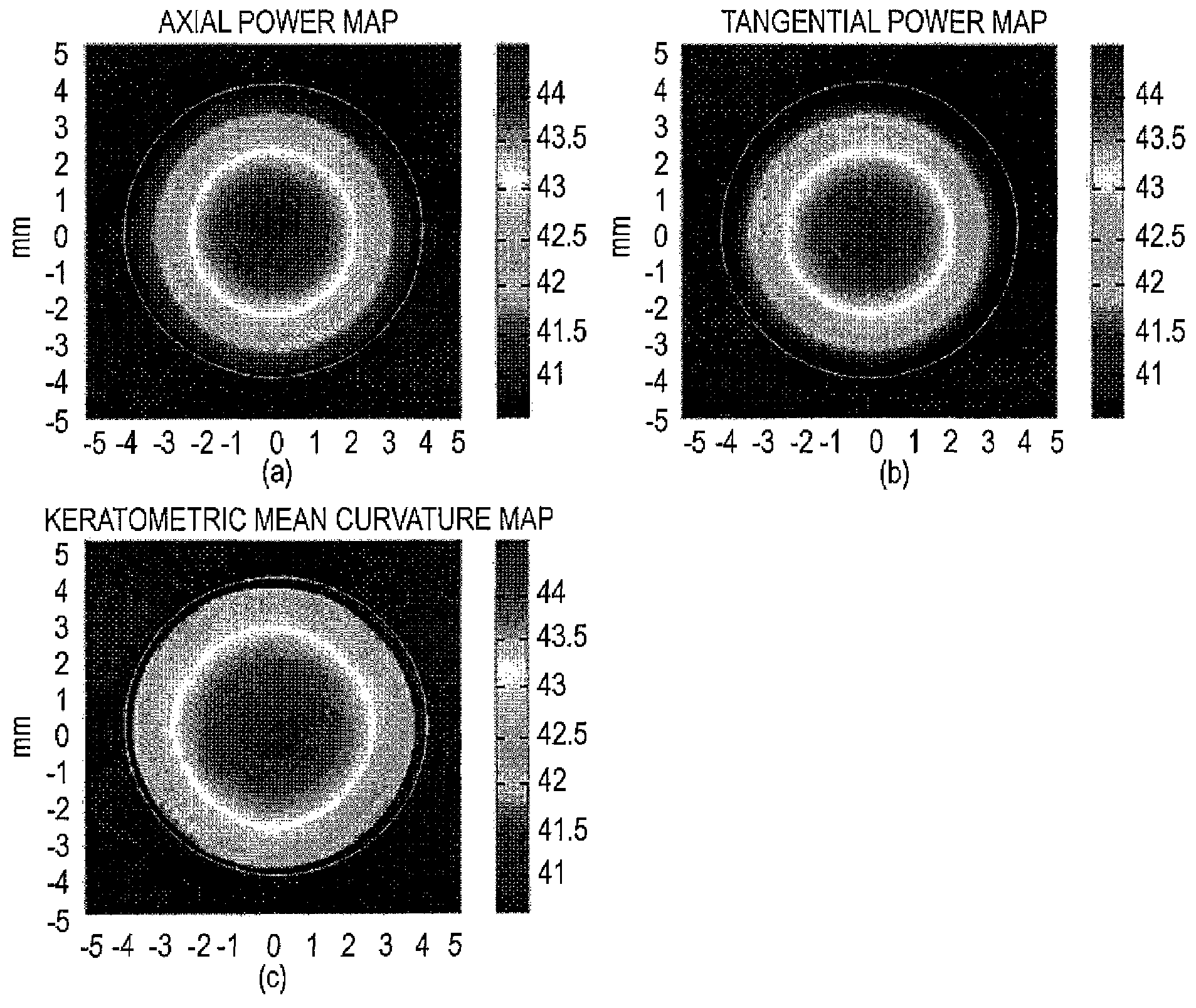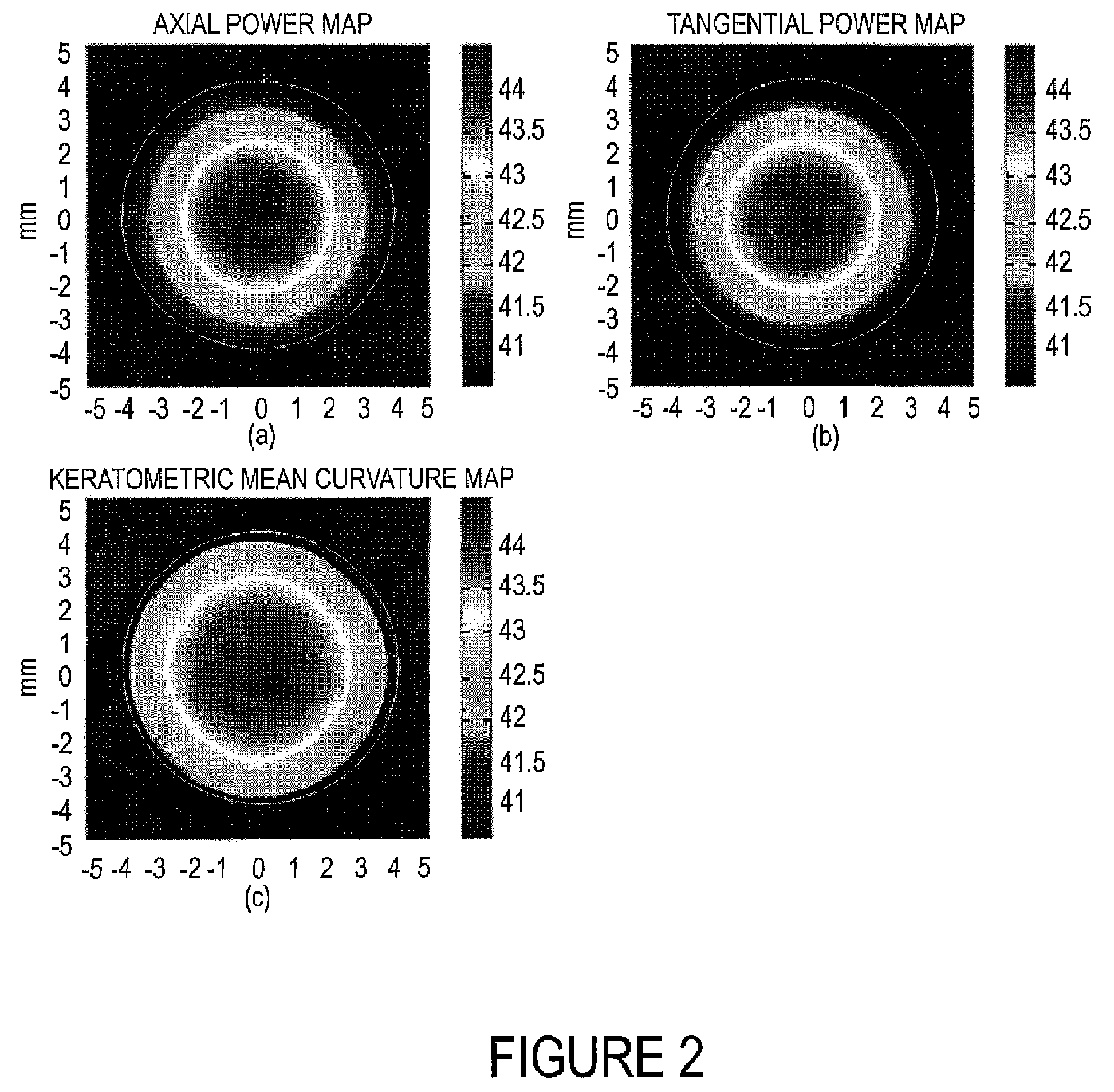Gaussian fitting on mean curvature maps of parameterization of corneal ectatic diseases
a technology of mean curvature and parameterization, applied in the field of ophthalmology, can solve the problems of affecting the progression of the disease is unpredictable, and the deterioration of vision can affect the patient's ability to drive a car or read normal print, so as to simplify the recognition of keratoconus and pmd, the effect of increasing the mean curvature and facilitating the pick-up of the “
- Summary
- Abstract
- Description
- Claims
- Application Information
AI Technical Summary
Benefits of technology
Problems solved by technology
Method used
Image
Examples
examples
Material and Methods
[0048]Keratoconus and Pellucid Marginal Degeneration (PMD) cases were identified by a review of the diagnosis codes (CPT) in The Cleveland Clinic Cole Eye Institute database. The retrospective chart review was approved by the institutional review board of the Cleveland Clinic. We identified those cases that had complete clinical chart documentation of slit-lamp findings and readable files on the C-Scan corneal topography system (Technomed, Berlin, Germany). Nineteen eyes with keratoconus and eight with PMD were identified. The cases were reviewed by authors D. M. and D. H. for proper classification. The inclusion criteria were history, slit-lamp findings, and corneal topographies consistent with a diagnosis of keratoconus or PMD, no history of previous corneal surgery, and topography maps with valid data points over a central area of more than 6 mm in diameter.
[0049]The cases were divided into the keratoconus and PMD groups on the basis of the topographic and cli...
PUM
 Login to View More
Login to View More Abstract
Description
Claims
Application Information
 Login to View More
Login to View More - R&D
- Intellectual Property
- Life Sciences
- Materials
- Tech Scout
- Unparalleled Data Quality
- Higher Quality Content
- 60% Fewer Hallucinations
Browse by: Latest US Patents, China's latest patents, Technical Efficacy Thesaurus, Application Domain, Technology Topic, Popular Technical Reports.
© 2025 PatSnap. All rights reserved.Legal|Privacy policy|Modern Slavery Act Transparency Statement|Sitemap|About US| Contact US: help@patsnap.com



